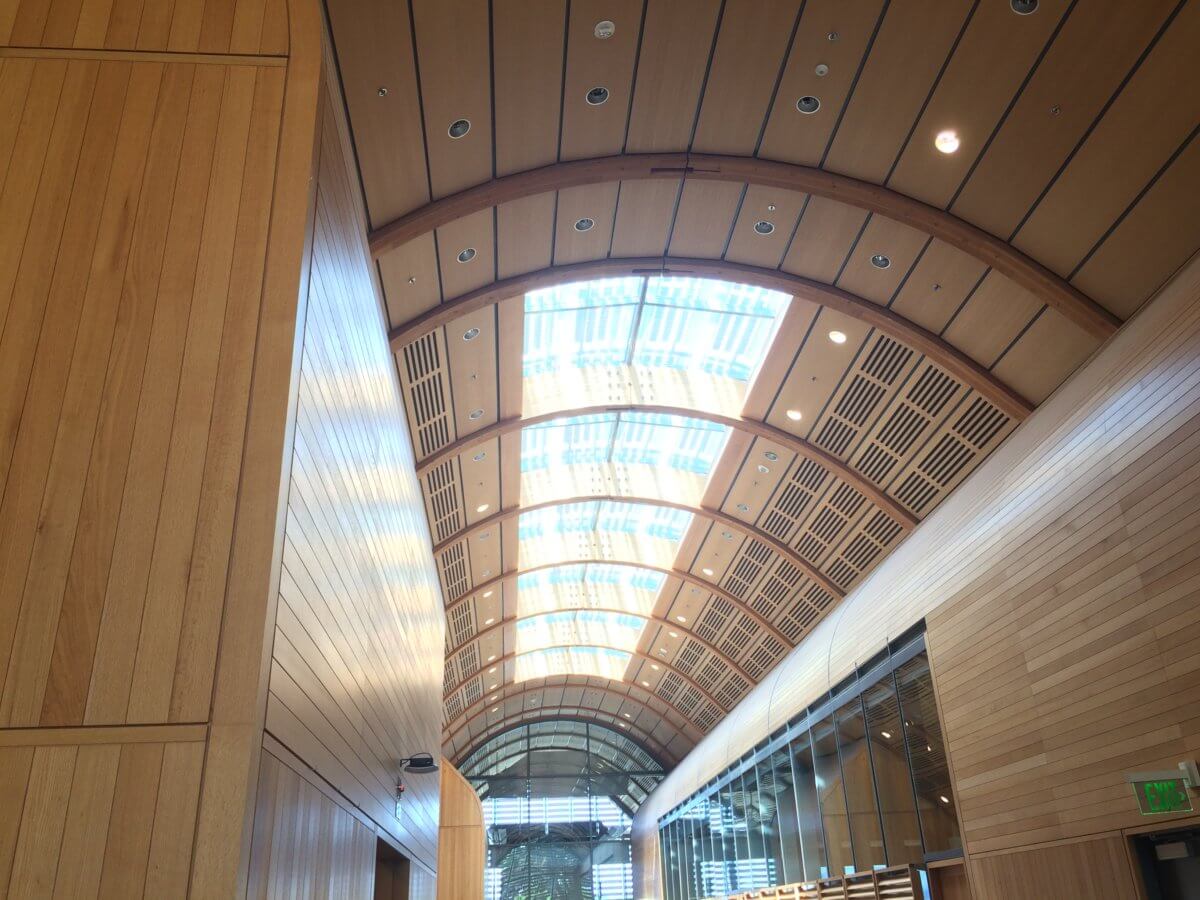As the ANU undergoes redevelopment, we’re left wondering whether the buildings will be functional, sustainable, or even aesthetically designed. For this Sustainable Campus Bulletin, we look at the some of the more impressive sustainable buildings housed at different universities around the world.
There is a whole host of awards and certifications given to green buildings, like the Leadership in Energy and Environmental Design (LEED) rating system. The LEED system evaluates the environmental performance of buildings and gives them a certification, encouraging the desirability of designing buildings sustainably.
Due to these developments, the trend is to pay more attention to the way buildings are designed on campus. Universities often want to showcase cutting-edge designs to demonstrate that energy efficient and green aesthetics can work. And, it is true that green buildings have the potential to produce 62 per cent fewer greenhouse gas emissions than the average Australian Building and use 51 per cent less water.
There are social benefits as well. As Canadian Architect George Baird suggests, ‘if buildings work well, they enhance our lives, our communities, and our culture.’ While it might be an off-script concept, green buildings not only save money but can contribute to healthier study environments and better interactions between students and the environment.
These five examples will show you how.
Green star ratings: Frank Fenner Building – ANU
This building, familiar to most as the Fenner School of Environment & Society and the ANU Climate Change Institute, has six-star Green Building Council of Australia Green Star rating and incorporates many sustainable design principles as an exemplar for other new building plans. What does this all mean? Most of its electricity comes from a solar system on its roof, and it improves its energy efficiency through automatic deactivation of lighting systems and double-glazed windows. Attention to detail in design ensures that the most (or least) of the sun depending on the season: the shading on the outer façade is angled to ensure that maximum sun comes through in winter. Interestingly, it creates an ‘ephemeral pond’ from stormwater which, having been filtered naturally, provides habitat for our local wildlife.
Solar Powered Housing: Stucco – University of Sydney
This is not a unique concept to you all – we have a coop at the ANU, and these living spaces promote a shared living environment that promotes equity. At Stucco, rent is far lower than the average Sydney apartment – think 90 dollars a week – and admission is means tested to ensure those who need it have access to accommodation. In 2016, they decided to become even cooler: they became on the first apartment blocks to install a shared solar and battery system to prioritise green energy and lower bills. In technical terms, they act as retailer and consumer of the energy their solar farm produces – an arrangement that other apartments and households are encouraged to start taking up.
Green Roof: School of Art and Design – Nanyang University Singapore
This building looks like a more sophisticated version of the grass hill on our own parliament house. However, this building is specifically designed to be energy efficient, and socially cohesive. It is legitimate; with a platinum-certified Green Mark energy saving of 1119,134-kilowatt hours and significant water savings through innovations like a rainwater collection system. The wide, curved glass façade that falls below the outer ovular green sphere allows maximum light to enter the building. There is also a winding staircase to the open green roof where spaces for interaction exist. On the ground floor, the doors open out into a ‘valley’ for students to easily escape into the outdoors.
Canopy views: Kroon Hall – Yale University
The building, home to the Yale School of Forestry and Environmental Studies, is constructed from locally sourced wood – red oak from a forest in Northern Connecticut that Yale manages itself. It is the literal dream of anyone who likes natural light for study – high ceilings, a glass façade, and a lounge and desk area that looks over a tree canopy. In technical terms, its design cleverly focuses on the long term. Tall central pillars dominate the building, with disconnected walls at each level of the building. This means that staff can rearrange the walls without having to deconstruct the whole building – a pretty neat innovation to create less impact on the overall structure of the building.
Using campus as an urban farm: Eden Hill Farm – Chatham University
Increasingly, universities are advocating for sustainability by integrating green practices and activities into the everyday life of the campus. The Falk School of Sustainability in the USA has taken this to a whole new level by creating a ‘satellite campus centred around a sustainable living experiment.’ Get this: the campus generates more energy than it uses! As part of their on-campus experience, students learn about renewable energy systems, waste management, and sustainable agriculture – producing food, recycling nutrients and helping to support surrounding habitats. And this is all carried out in an integrated building network that promotes student interaction and environmental flow – hard to top that.
We acknowledge the Ngunnawal and Ngambri people, who are the Traditional Custodians of the land on which Woroni, Woroni Radio and Woroni TV are created, edited, published, printed and distributed. We pay our respects to Elders past and present. We acknowledge that the name Woroni was taken from the Wadi Wadi Nation without permission, and we are striving to do better for future reconciliation.
